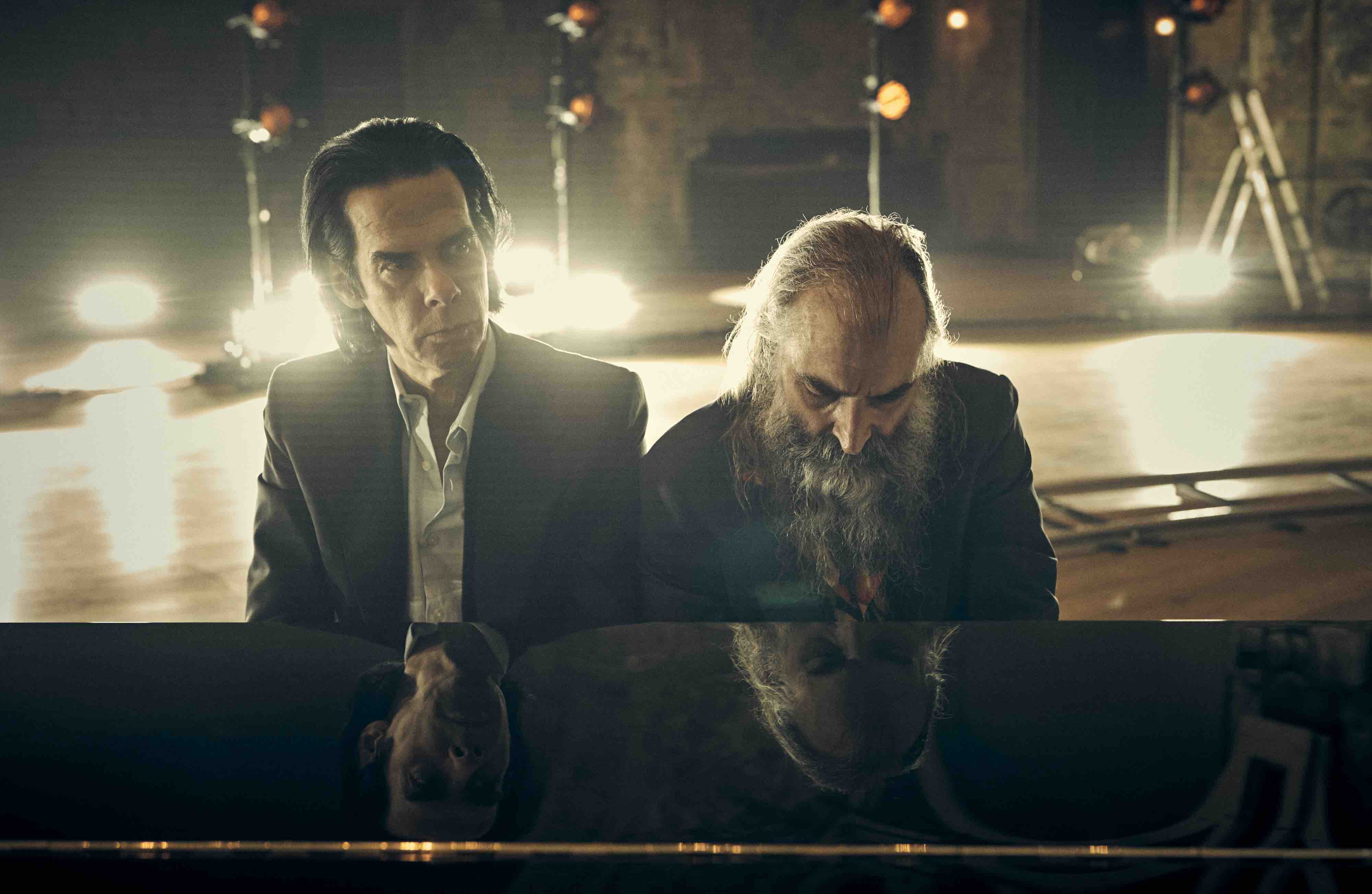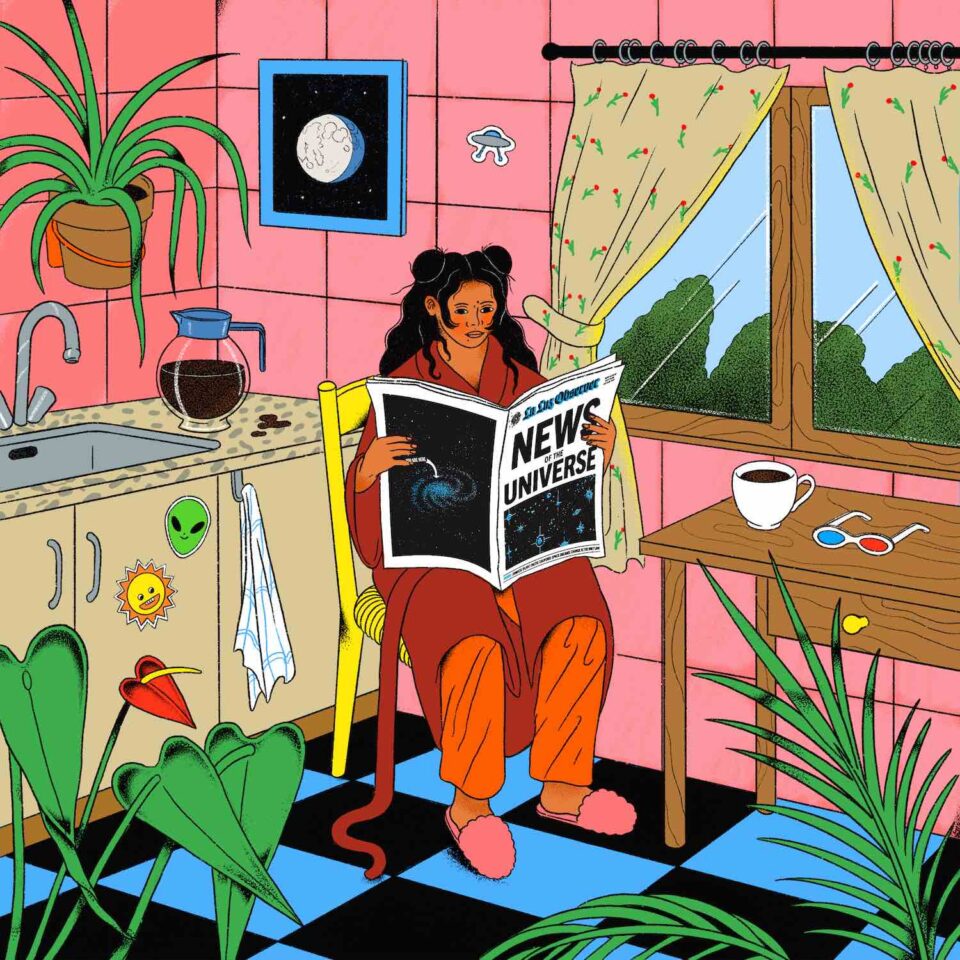It’s nearly impossible to write about a man coming through tragedy as wholly and humanely as has Nick Cave after the 2015 death of his 15-year-old son, Arthur, only to—this week—watch him lose another son, Jethro. While a larger family has emerged from Cave’s first deep loss, that of a devoted, concerned fanbase with whom he’s carved a space in his soul to answer emails with his Red Hand Files, one can’t ignore the singer/author’s wife and children at this time, and our hearts go out to them.
Where spreading light into darkness is concerned, director Andrew Dominik has been there with Cave and collaborator Warren Ellis before: he’s utilized the musical pair’s skills as film score composers since 2007’s fiction feature The Assassination of Jesse James by the Coward Robert Ford up through his forthcoming Marilyn Monroe biopic Blonde, and documented their lives through Cave’s first period of mourning with 2016’s One More Time with Feeling. What aided Cave in his bravery through filming that documentary was what Dominik noticed during the 2016 shoot: the outpouring of genuine affection and care from fans and strangers struck by Cave’s loss. And it’s this beauty and sensitivity that’s followed Cave and Ellis into their next documentary with Dominik, This Much I Know to Be True.
“Nick understands, now, how life is a series of losses, and how you respond to that is incredibly important. And his response has been to become incredibly responsible for the people around him.”
— Andrew Dominik
Filmed in London and Brighton, Dominik’s new documentary focuses heavily on Cave, Ellis, and the rest of the Bad Seeds performing fully fleshed-out songs from their last two studio albums, Ghosteen (with the Bad Seeds) and Carnage (just Cave and Ellis). As both of these records are sonically softer and more directly and spiritually emotional than, say, the marauding menace of a Bad Seeds show, This Much I Know to Be True takes on a holy quality, one guided by the serenity of its songs and the light-scape and cinematography of Dominik and his crew. What goes on in the off-concert time of the film is as warm, glowing, haunted, and filled with an inner light as is their live sequences of soul-stirring songs such as “Lavender Fields” and “Ghosteen Speaks.”
The film features an appearance by friend and collaborator Marianne Faithfull, one that, though seated and aided by a breathing apparatus, is still forceful and poignant in its vulnerability. And though Ellis is a delight—a whirlwind of kicks and arbitrary arm movements, directing the human orchestra through each mesmerizing moment when he isn’t discussing the differences between he and Cave—it’s, of course, the writer and singer whose vulnerability is front and center of the film.
The Cave depicted here is most nuanced and giving. He talks of his past self and how he would describe who he was as a musician first—whereas now he thinks of himself as a father and husband first, then an artist. “Nick understands, now, how life is a series of losses, and how you respond to that is incredibly important,” Dominik informed me in a brief chat about the new film. “And his response has been to become incredibly responsible for the people around him. He’s a much kinder person now, who takes himself a lot less seriously.”
“Someone is asking him something stark and serious about their lives and Nick is going to respond in full, in the best way possible. And that is as good and healing for Nick as it is the person he’s writing to.”
— Andrew Dominik
At the start of This Much I Know to Be True, stripped of his usual couture suit and donning a sculptor’s smock, Cave teases about taking the government’s pandemic advice to retrain and become something of a ceramicist, specializing in works based on the Staffordshire “flatbacks” popular in the Victorian era, painted by children in the dark satanic mills. Cave also goes on to address the Red Hand Files and those who write to him daily, putting their trust in him, with results cathartic to all.
“He’s doing this all to make his mind heal as well as heal others,” says Dominik. “He’s not going to allow his mind to run away with him. Someone is asking him something stark and serious about their lives and Nick is going to respond in full, in the best way possible. And that is as good and healing for Nick as it is the person he’s writing to. He’s looking at this in the most healthy of ways, to think better. Nick knows now that we’re all in this together and acts accordingly and tenderly.” FL







